SEO
Free SEO Analysis
SEO Services
Content Marketing Services
Local SEO
Link Building Services
Specialized SEO Services
PPC
REPUTATION MANAGEMENT
Free Reputation Management Analysis
Reputation Management Services
Review Management Services
Specialized Reputation Management Services
CEO Reputation Management
Brand Enhancement
Business and Directory Listings
Comprehensive Reputation Management Audit
SOCIAL MEDIA
Free Social Media Analysis
Specialized Social Services
WEB DEVELOPMENT
Free Website Analysis
Web Design Services
Mobile Development Services
Website Maintenance Services
Specialized Development Services
MARKETING AUTOMATION
Free Marketing Automation Analysis
Specialized Marketing Automation Services
Comprehensive Marketing Automation
INDUSTRIES
ABOUT DMA
Mobile Development
An In-Depth Guide to All Types of App Monetization
Request a quote
Its Fast, Easy & Free
Executive Summary
- Before you decide on a particular monetization approach, it is important to consider all the important factors related to your app or you might end up with the wrong choice.
- Not all of the apps earning poorly have poor monetization as the source of their troubles, but choosing the proper monetization method will ensure that the users that reach you get a payoff.
- When it comes to app success, user loyalty is a big issue and even though monetization is necessary it can hinder this loyalty if it is done badly.
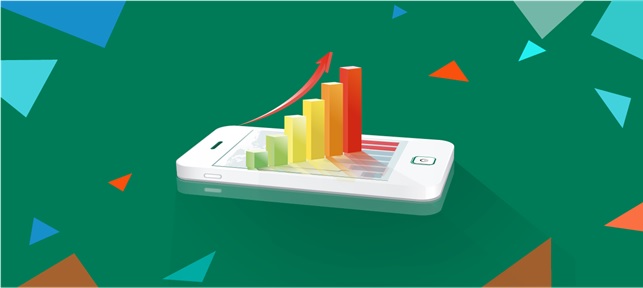
The digital age brings with it a lot of new opportunities for businesses and creates new markets practically every year. It’s getting problematic for experts to keep track of and predict the impact of new trends within the sphere of the digital economy. It’s even difficult to separate the “real world” economy, since more and more commodities tend to contain that smart element or IoT (Internet of Things). Still, some things are a certainty.
Smartphones are the norm, period. And smartphone apps have made a significant impact on the popularity of smartphones and the financial growth of digital media.
App Financial Market
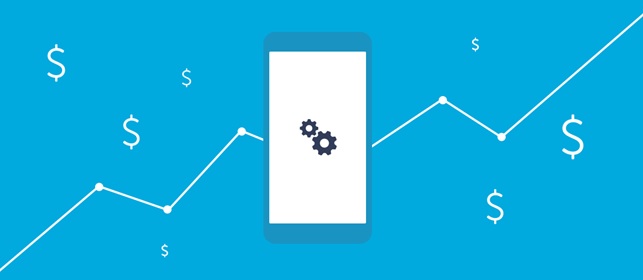
The app market has become so robust that experts predict incredible future growth. The total net-to-publisher and in-app advertising revenue was somewhere around $70 billion in 2015 and is expected to rise to $190 billion in 2020. That’s a growth in yearly revenue of 2.7 times in just half a decade.
This is all even more astonishing when we take into account that Apple’s App Store turned 10 years old in 2018. According to Statista, in 2017, around 197 billion apps were downloaded by users worldwide.
If we take a look at Android apps, we can also see that the number of downloads nearly doubled from 2015 to 2016. It went from 50 billion downloads in 2015 to 90 billion in 2016.
These are just some of the statistics that indicate the stability of the app financial market. It’s clear that apps are here to stay and that more investors are joining the race. The competition is fierce but not as direct as you might think.
In many cases, the success of one app doesn’t really affect the success of another since they don’t target the same audience, cover the same service, or provide the same type of entertainment. There are more than enough users out there for every well-designed app to find its audience.
Still, the big question remains — what’s the best way to take advantage of this interest? In other words, what’s the best monetization method?
App monetization – No universal solution
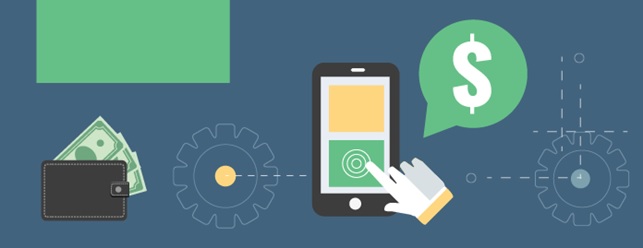
If you have come here with the intention of finding a one-size-fits all type of answer for app monetization, tough luck! There is no such thing and whoever tells you that there is, is misleading you! We are here to discuss all the different types of app monetization and the situations in which they are used for maximum effectiveness.
There are five basic monetization approaches you can use to earn money from your app:
Paid Download
Advertising
Freemium
In-App Purchases
Subscription
Every one of these approaches has its merits and goes well with specific types of applications. In some cases one particular type of monetization may be used over another not just based on app type, but any number of other reasons ranging from target audience, age group, core problem the app solves and so on.
Before you decide on a particular monetization approach, it is important to consider all the important factors related to your app or you might end up with the wrong choice. The consequences of choosing a suboptimal way of revenue generation can be very severe. At best you will earn less than you intended, at worse you will lose the majority of your users and your app’s lifespan will be significantly shorter.
This decision will impact everything from user experience, to your app’s popularity growth, adaptation and pretty much everything else. This isn’t a decision you should rush into, since it will literally determine the faith of your app.
This is a relatively old piece of information, but according to calculations done by Tristan Louis the average earning per app download in 2013 was $0.18 for Android and $0.1 for Apple apps.
Let’s take a look at some contemporary information for average monthly earnings that apps are pulling in 2017:
50% earn less than $500
26% earn between $500 and $500k
19% don’t earn any revenue
4% earn $500k+
So, even though the market is very healthy and there is plenty of interest for apps out there, not everyone is doing great. Not all of the apps earning poorly have poor monetization as the source of their troubles, but choosing the proper monetization method will ensure that the users that reach you get a payoff.
Let’s see when and why the five methods we mentioned are supposed to be used.
1. Paid Download
With this approach, developers are charging a one-time fee for unlimited future use of their app. This method is usually reserved for unique apps that solve a very specific problem and/or have no competition on the market.
If there are apps out there which do the same thing and are free of charge (or use a different monetization method that doesn't require payment before use) even though they provide inferior service they will take most of the revenue on account that they don’t require an upfront payment.
Still, the advantages of this approach include better user experience, since there will be no ads interrupting users. Also, most paid apps include support and have regular updates, being that they are usually planned as apps with a longer lifespan.
It is important to consider that both Apple store and Google take 30% of sale revenue and this should be accounted for when determining the app price. Before making the app available for purchase, there needs to be an absolute agreement on the price of the app, since any later modification of the price may have a negative impact on app success.
The downside of this method is that it may present a barrier for the users, since they will need to pay for the app even though they haven’t had an opportunity to try it out.
The requirements for success:
Great marketing and PR presence are a necessity for the success of this method, since you need to convince users that the app is worth their buck. The app in question needs to provide better value than all apps that deal with the same issues, as well as match the value provided with the price it is assigned. It also needs to feel like a high quality premium class, i.e. the user experience needs to be top-notch.
2. In-App Purchases
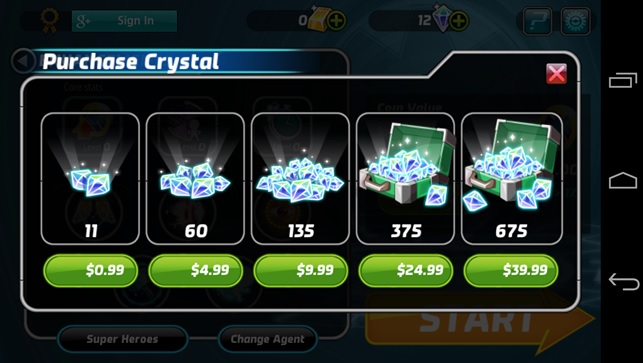
This approach has been used most often with gaming apps and some of the top-notch applications rely on this method of monetization. Basically the app is morphed into a virtual storefront and is a standalone sales channel of its own. Regardless of whether you are selling virtual or real products, your app needs to have a way to get users through its sales funnel without taking away from the user experience.
The requirements for success:
If you are putting out a gaming, retail or service app, use this monetization strategy. The app’s user experience needs to be good enough to ensure repeated use. The incentives for purchases also need to be well designed.
3. Advertising Monetization
If you are after a larger crowd and do not want to tie your revenue source directly to the number of downloads, then advertising might be your best bet. One of the crucial advantages this type of monetization offers is that it removes the barrier of having to spend money to get access to the app (or all the app’s features) allowing people who are not convinced that they need it to try it out, with no questions asked. This gives the developer access to a much larger crowd of users and potentially more revenue.
The downside is obvious enough – the user experience suffers under the reign of ads that will pop-up from time to time. While most users are used to being spammed by advertisement all over the Web by now, it can still be very frustrating to have your gaming experience be interrupted by a random commercial.
Furthermore, in most cases the ads will be irrelevant for the user in question, so they are forced to waste their time on an ad they didn’t agree to, about a product no amount advertisement would make them purchase.
Still, developers have some control over how they monetize with this method. There are more than a few types of ads you can choose from in order to find the approach that will chafe on your user experience the least:
Native Ads – These types of ads are the least harmful approach you can take, but they are not applicable for all apps. They are designed to match every aspect of the application from form, visual presence, overall feel and take away very little from the user experience. The prime example of this type of monetization in action is the Facebook application.
Interstitial Ads – Another approach that goes over well with the users. Interstitial ads appear in between two different screens in an app. Typically they are most often used in gaming apps, appear in predictable places, which allows users to get used to them pretty quickly, and they have a low impact on the quality of the user experience.
Reward Ads – These ads will appear based on specific triggers. In games, these might be specific achievements, scores and so on. The upside of this type of ad is that everybody wins. Usually these ads include discounts, coupons or some other exclusives that the user can view as valuable.
Banner Ads – One of the most aggressive ways to monetize through advertising. Banners are fixed, always present and very annoying for the users. This kind of approach will impact your user experience considerably and should be used with care.
Pop Up Ads – These ads are very pushy, since they will come up in the users’ device status bar. The idea is to make the user more aware of ads they are offered, but it should be pretty obvious why this rarely works and why they are used very sparingly.
The requirements for success:
Advertising monetization is a great approach if you want to avoid getting your revenue directly from the users. Ideally your app’s design should be focused on frequently used and/or long sessions to ensure that more ads are triggered.
They are also great if your app isn’t really adjusted for In-app purchases. Finding the type of ads that works best for your app design type is a big part of the whole thing, since this will ensure the least damage to user experience.
4. Freemium
One of the most popular monetization methods for apps today. They idea behind freemium is to provide the app free of any charge, but to restrict some of its features. The users can try out the app without any investment, but if they want access to the restricted features they will need to pay for them individually or subscribe for premium app access.
The app in its basic free form should have enough functionality to get users interested, otherwise they will not linger long enough to even consider paying for the premium features. Developers should be careful not to come off as too greedy, since rage-quitting over monetization isn’t uncommon in these situations.
Furthermore, in situations where gaming apps use freemium but are focused on PvP, you can run into additional issues since the users who pay will have an unfair advantage over the free users.
Freemium is one of the most popular methods used by the highest grossing apps on the App Store. The top 30 apps are all free but offer content that needs to be purchased.
The requirements for success:
Freemium is great for combined monetization methods. The basic app needs to be good enough to be interesting or useful without having to pay for premium content or features. The features that are locked need to be worth the money you ask for them.
There is nothing worse for your revenue stream than the user actually deciding to buy a feature and it ends up being underwhelming. It works best with a large user base and long app sessions.
5. Subscription
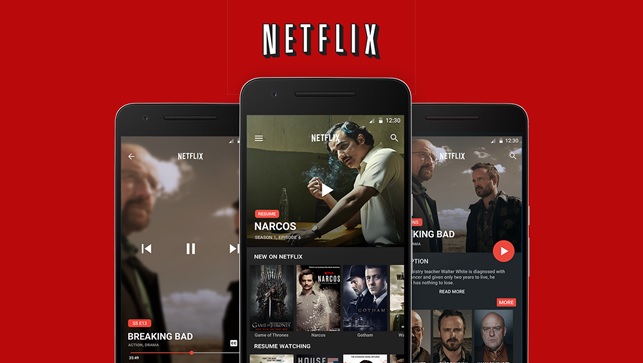
The subscription monetization type is quite similar to freemium, with one big difference – the content is locked instead of features. This means that users get to use the app till a certain point and if they want to continue, they need to subscribe. This monetization approach is used mostly by apps that offer services and the prime example of this is Netflix.
The requirements for success:
The subscription method works best with apps that rely on their content to attract users. It is also important that the app is designed to be used frequently. This way, the users will not feel cheated about having to pay a full monthly subscription, since they will be using it on a regular basis.
Monetization in apps is all about balancing between getting the most revenue possible and avoiding destroying user experience. In most cases app developers tend to rely on a combination of monetization methods to find that sweet spot.
Still, some approaches may exclude others and combining the subscription method, for example, with the advertising method is considered rude and in bad taste. If a user subscribes to your app, they will expect a seamless user experience so ads will be considered a sort of a betrayal of that agreement.
The monetization method needn’t be in place upon app release. The app can be completely free of charge and promoted until it establishes a steady user base, which you can then use to extrapolate relevant data to help you find the best monetization approach. Some of these data points include:
Number of active users
Session length
LTV (Lifetime Value) per user
Overall app use
Retention
Abandonment rate
Once you have gathered this data, you can find the ideal monetization method with more ease since you can see exactly how the user base is making use of your app. This will allow you to make decisions that will help you avoid hindering user experience and damaging your app’s success. Yes, this means that you will be sacrificing some of that initial revenue that you could have gotten, but you also ensure the apps longevity and unobstructed growth.
When it comes to app success, user loyalty is a big issue and even though monetization is necessary it can hinder this loyalty if it is done badly.
So, rely on your data, pay attention to user reactions and attempt to monetize without stepping on the users’ toes.
We hope you found this guide useful and we wish you the best of luck in your conquest of app stores.
Our Sales team